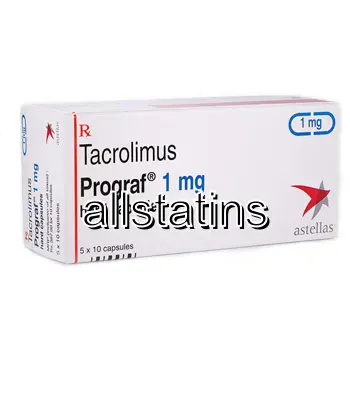| Package | Dosage | Price | Price per Dose | |
|---|---|---|---|---|
| Dosage: 0,5mg | ||||
| 90 pill | 0,5mg | NZD1,102.63 | NZD12.23 | |
| 60 pill | 0,5mg | NZD783.60 | NZD13.07 | |
| 30 pill | 0,5mg | NZD436.70 | NZD14.56 | |
| 20 pill | 0,5mg | NZD306.61 | NZD15.33 | |
| 10 pill | 0,5mg | NZD164.13 | NZD16.54 | |
| Dosage: 1mg | ||||
| 90 pill | 1mg | NZD1,548.65 | NZD17.22 | |
| 60 pill | 1mg | NZD1,108.82 | NZD18.49 | |
| 30 pill | 1mg | NZD653.51 | NZD21.74 | |
| 20 pill | 1mg | NZD486.25 | NZD24.28 | |
| 10 pill | 1mg | NZD272.54 | NZD27.38 | |
| Dosage: 5mg | ||||
| 20 pill | 5mg | NZD1,477.41 | NZD73.81 | |
| 10 pill | 5mg | NZD826.96 | NZD82.67 | |

Tacrolimus Description
Overview of Tacrolimus
Tacrolimus is a powerful immunosuppressive medication widely used in transplant medicine to prevent organ rejection. It belongs to the class of calcineurin inhibitors, which work by inhibiting the activity of T-lymphocytes involved in the immune response. By suppressing the immune system, tacrolimus helps the body accept a transplanted organ, reducing the risk of rejection and improving long-term transplant success. The medication is available in various formulations, including capsules, ointments, and injectable forms, catering to different medical needs.
Effectiveness and Benefits
Many patients and healthcare providers have found tacrolimus to be highly effective in maintaining transplant health. Its ability to suppress immune activity more selectively compared to older drugs like cyclosporine offers advantages such as reduced adverse effects and improved graft survival rates. Patients on tacrolimus often experience fewer episodes of rejection when the medication is taken consistently and monitored closely. Moreover, tacrolimus's targeted approach helps to preserve other organ functions by minimizing overall immune suppression, thus balancing efficacy with safety.
Usage and Dosage
The dosage of tacrolimus varies depending on the patient's condition, weight, and response to therapy. Typically, it is administered twice daily, with strict adherence essential for optimal results. Regular blood tests are required to monitor drug levels, kidney function, and other parameters, ensuring the medication is within the therapeutic window. For topical applications, such as in the treatment of eczema or other dermatological conditions, the ointment is usually applied directly to affected areas following medical instructions. It is crucial to follow prescribed guidelines closely to avoid underdosing or overdosing, both of which can have serious consequences.
Possible Side Effects and Risks
Despite its effectiveness, tacrolimus can cause several side effects. Common adverse reactions include tremors, headaches, gastrointestinal discomfort, and increased susceptibility to infections. Because it suppresses the immune system, patients may be at higher risk of developing bacterial, viral, or fungal infections. Kidney impairment is another concern with tacrolimus therapy, necessitating regular kidney function tests during treatment. Some individuals may develop hypertension or high blood sugar levels as well. Serious but rare side effects include neurotoxicity, allergic reactions, or malignancies such as lymphomas. It is vital to communicate any unusual symptoms to a healthcare professional promptly.
Precautions and Interactions
Patients prescribed tacrolimus should be cautious about drug interactions. Many medications, including certain antibiotics, antifungals, and antihypertensives, can alter tacrolimus levels, leading to toxicity or diminished efficacy. It is essential to inform healthcare providers of all medications being taken. Additionally, tacrolimus is not recommended for use during pregnancy or breastfeeding unless absolutely necessary, as the safety profile is not fully established. Patients should avoid activities that increase infection risk, stay well-hydrated, and attend regular monitoring appointments to ensure the drug's safe and effective use.
Final Considerations
Overall, tacrolimus remains a cornerstone in transplant medicine, offering considerable benefits in preventing organ rejection. Its ability to provide targeted immune suppression has improved the prognosis for many transplant recipients. However, the potential for significant side effects and interactions makes ongoing medical supervision essential. When used properly, tacrolimus can improve quality of life and long-term outcomes for patients undergoing organ transplantation. As always, adherence to prescribed treatment plans and regular check-ups are key to maximizing its benefits and minimizing risks.
